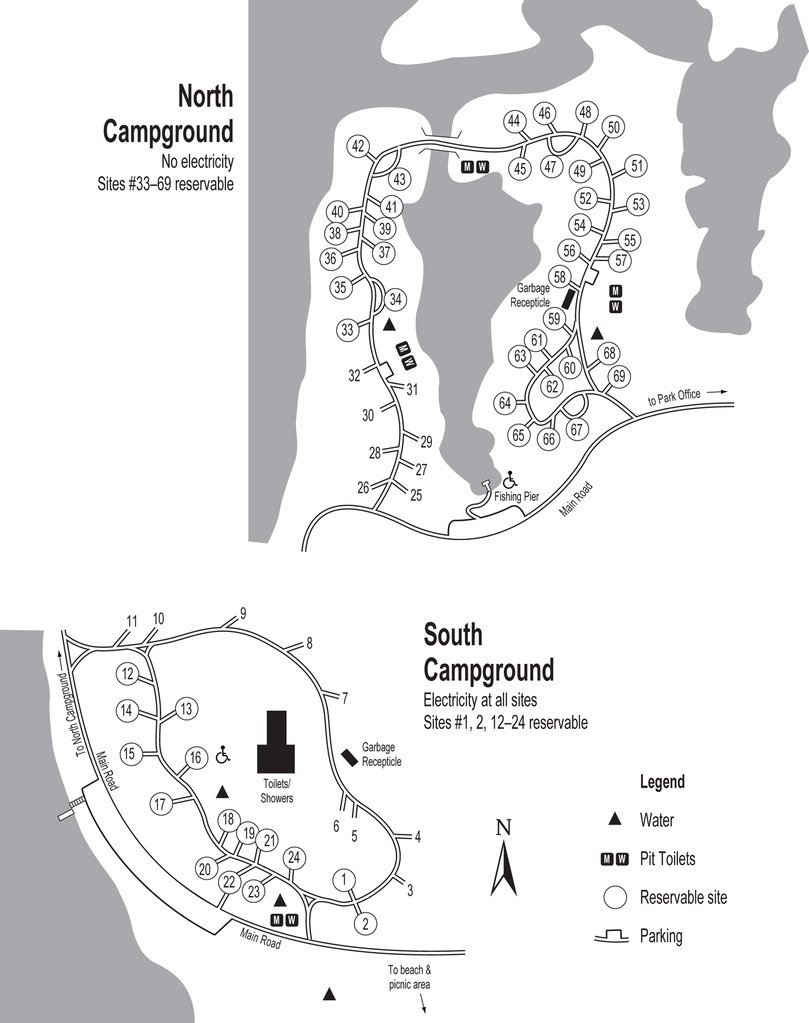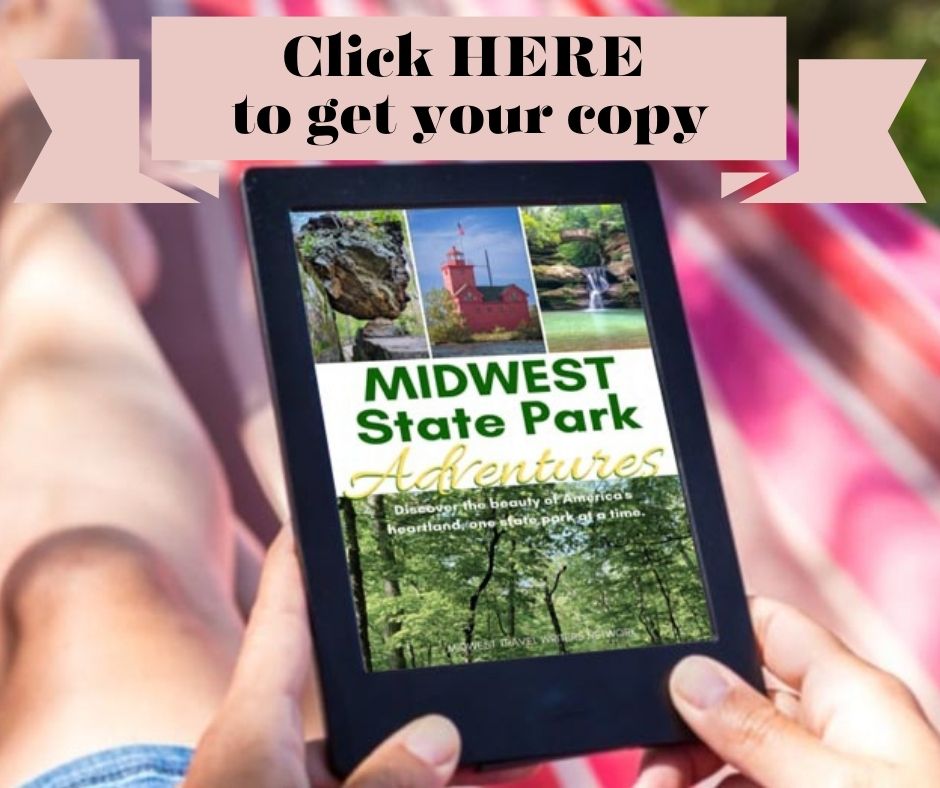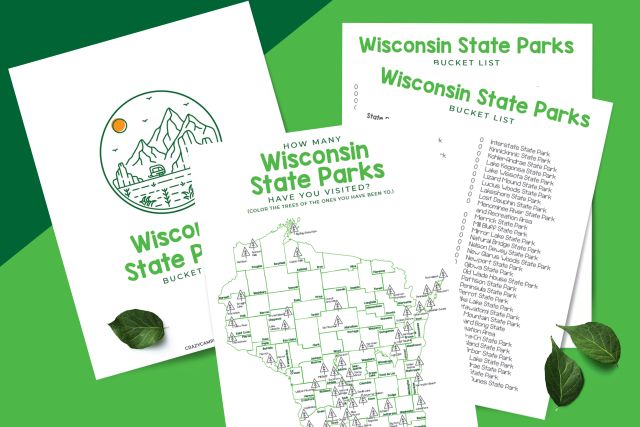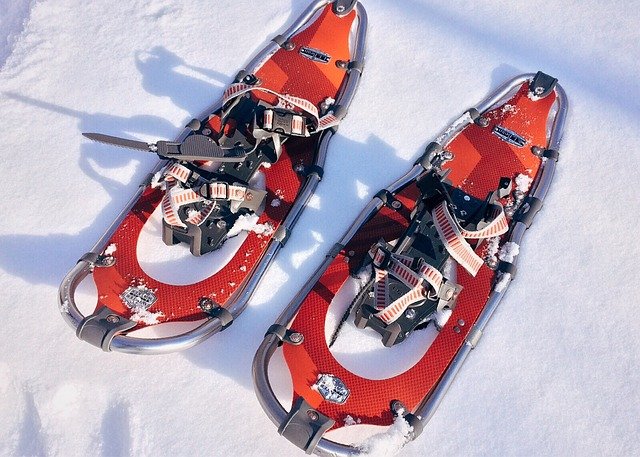
Complete Guide to Brunet Island State Park
We may earn money or products from the companies mentioned in this post.
Want to know about the natural beauty and wonders of Brunet Island State Park? From hiking, kayaking, bird watching, wildlife viewing, camping, and more we have it all covered!

With over 1300 acres of scenic beauty and a number of adventure activities to keep yourself busy with, Brunet Island State Park is an excellent choice if you’re looking to take a trip alone or with your family!
Excited already? Here’s everything you need to know before you head there!
Complete Guide to Brunet Island State Park
From trekking and camping to kayaking and boating, there are a ton of activities and recreation opportunities to keep you busy while you’re here. And if you’re in the mood to sit back and relax, you’ve got that too!
Get there during the winter months to enjoy some classical-style skiing, or just sit by the pool during the warmer months of the year if you don’t want to put in a lot of effort.
A Quick Glimpse
The Brunet Island State Park is located right where the Fisher river joins the Chippewa River, with a major portion of the park located on an island in the Chippewa River, in the Northern Highland region of Wisconsin. The park connects to two major trails- the Ice Age National Scenic Trail and the Old Abe State Trail, and offers a number of campsites (69 to be specific), along with flush toilets, a playground, shelters, hiking trails, and electricity.
Plus, it is pet-friendly too!
History of Brunet Island State Park
The park is named after Jean Brunet who was born in France. He came to America when he was 18 years old. He was called a man of “considerable note” and served as an officer in the U.S. Army and participated in the building of Fort Crawford. Later he moved to Prairie Du Chien, Wisconsin, where he died at the age of 86.
Brunet was responsible for building the first dam and sawmill in Chippewa Falls. This opened up the area of the Chippewa Valley to an expanding lumber trade. He piloted his first raft of lumber down the Chippewa and Mississippi Rivers to Prairie Du Chien.
Jean Brunet had an idea to go north to the Chippewa River. When he got there, it wasn’t developed or explored. He built a log building that was also a trading post, supply depot, and meeting place for travelers. The Brunet trading post is near where you can see a historical marker today on State Highway 178 south of Cornell.
A ferry service was set up that would cross the river. Some of the foundation stones are gone now, but they were originally on the other side of the river from where there is a dam today. The man who set up this service was respected by everyone and he helped to make peace between Native Americans and European-Americans.
Teacher. Missionary. Guide. Explorer. Brilliant engineer. The man was a legend AND his wooden damn across the Chippewa River not only lasted 60 years through floods and more, but it was beyond sound when it was torn down for replacement!

Enter Cornell
First named Brunet Falls, the town soon became Cornell.
A man by the name of Ezra Cornell helped to found Cornell University in New York, in fact, that university was named after him. He convinced the government of New York to buy land in Wisconsin for the university, and that made money for the school with the lumber industry. That is why changed the name of the university to honor him.
Cornell always visited Jean Brunet’s inn. Jean Brunet was a great help to Cornell in his work. He did a lot of scouting for timber and other things that Cornell needed.
Bring in the Industry
In 1911, a permanent dam was built by Cornell’s east side, on the Chippewa River. This dam was made at the same time that the Cornell Wood Products Company was started and it guaranteed steady employment in this area. The company made paper products, cardboard, and wallboard.
The mill worked year-round as it had steam pipes that helped keep its millpond from freezing over. They installed a stacker that is still in Cornell Mill Yard Park today. Pulpwood came in on railroad cars and then was housed in the millpond until the logs were sawed into 2 foot long pieces.
That stacker helped carry pieces of wood up high and then sorted and dumped them into different piles. They needed to be sorted into piles because they needed different grades of paper to be made. The pulpwood was then placed in water and floated to the paper mill.
In 1971 modern hydraulics made it obsolete and when paired with the paper industry slump? Well, that was pretty much the end. They filled in the pond and the park was formed.
It Became a State Park!
Northern States Power Company donated 179 acres of land to the state in 1936. The park was dedicated to Brunet’s memory in 1940. In 1938, the Civilian Conservation Corps built a shelter for people who want to go on the island. But it was destroyed by a storm in 1970 that some say was a tornado. Then 25 volunteers came and helped clean up all of the fallen trees and debris.
In the early years, there was a beach on the west side of the island near the campgrounds. In 1973-74, because of work on the dam, they drew down water level and it became dangerous. They moved to a new location at the south end of the island.
In 1977, another tornado landed on the island. It blew down 18 acres of hemlock trees in the park. The park was closed until the spring of 1978 because there were so many trees and leaves that covered everything. Now, birch trees have grown back in that area where there were huge hemlocks before.
Brunet Island State Park Camping
Brunet Island has two family campgrounds. You can choose to reserve a campsite online.
69 sites between the North and South campgrounds, one being more rustic than the other.
The South campgrounds have just 24 campsites but have electricity, a shower building, and space accessible for people with disabilities (site 16E).
You can also choose to set up camp in the North campground, which has 45 campsites. The only downside here is the fact that there’s no electricity. Please remember that the use of generators is forbidden in Wisconsin State Parks – and, it is an obnoxious way to treat your camping neighbors. That being said, there are a few medical exceptions: Generator use in the Wisconsin State Park System
Rumor has it that there are pay showers. I can’t find anything to verify it but you might want to bring your quarters, just in case.

Getting Supplies Near Brunet Island State Park
You’ll find many vendors in Cornell selling almost everything you need for your trip to the park, including camping supplies. Pick up fuel and basic groceries, or use the Laundromat on the main street. Personally, I suggest you plan ahead and save a lot of money – just check out our list of camping items you can get at your local Dollar Tree store!
The local vendors there also offer kayak and canoe rentals. For firewood, you can contact the campground host.
Get Your Wisconsin Vehicle Admissions Sticker Here
The admissions sticker is mandatory on any and all motor vehicles stopping in the state parks, forests, and other recreational areas in Wisconsin. Get your sticker here.
Brunet Island State Park Activities
Brunet Island Is the top Wisconsin State Park for paddling adventures during your camping trip. All of the North loop campgrounds are on the water, which includes the lagoon. The island has a maze of channels that connects a number of lagoon-like ponds. Bring your bikes as the park is the northern terminus of the Old Abe Bike Trail a paved bike-only trail along the Chippewa River.

Picnicking at Brunet Island State Park
Brunet Island State Park has over 20 acres of picnic area available, mainly on the south and west sides of the island. Here, you can sit back, relax and enjoy the beautiful view of the countryside and the Chippewa River.
If you’re picnicking with kids, get yourself to the playground located at the southeast section of the picnic area. Remember that the park has a strict policy when it comes to the disposal of waste, so you’ll need to carry your trash with you while you leave.
Brunet Island State Park Water Sports
The park offers opportunities for you to go swimming, canoeing, boating and kayaking. Bring your canoe or kayak and paddle the lagoon. Locate a boat launch for access to more water in nearby lakes like Portage Lake, Big Catfish Lake, Spring Valley Reservoir, plus many others.
Brunet Island Bay State Park Fishing
Just near the north and south camp area, you’ll also find a fishing pier which is great for fishing enthusiasts. If you have a Wisconsin fishing license, you can take advantage of the free basic fishing equipment available at the park office, and hope to catch a variety of fish including catfish, muskie, northern pike, walleye, and even smallmouth bass.
Brunet Island State Park Swimming
As with most Wisconsin State Parks, there are no lifeguards on duty. They do have areas mapped out with ropes and buoys. Pets, food, and beverages are strictly not allowed in the beach area, so keep that in mind.

We put together a Wisconsin State Parks Bucket List Free Printable for you – to keep track of all the state parks and nature areas you visit. Get it here: Crazy Camping Girl FREE Wisconsin State Parks Bucket ListDownload
Brunet Island State Park Kayaking, boating, and canoeing
The island is part of a long, thin piece of water that stretches 3.5 to 4 miles from the Cornell dam to the Holcombe dam. There are channels for flat-water paddling in the north part of the park where there are many undeveloped islands. You might need to watch out for rocks, especially ones at the south end near the town where water levels might change quickly.
The boat ramp is on an island not far from the entrance road. There are many spots to put boats in the park near the South Campground. You can also rent a canoe or kayak from Cornell and Holcombe.
Hiking at the Brunet Island State Park
There are over 8 miles of trails available for hiking enthusiasts at the park with varying levels of difficulty. This also includes two miles of the Ice Age National Scenic Trail.
Jean Brunet Nature Trail
This is a trail where you can walk and learn about the environment around you as there are signs along the trail describing the history and nature of the area. The Jean Brunet Nature Trail starts near the main bridge to the island. It has 500 feet of paving for people who need help walking on it. There is also a table at the end so people can eat and fish there too!
Nordic Trail
You can start the hike from the park office and follow the Fisher river, exploring a variety of glacial terrain along the way.
You’ll find orientation signs to guide you throughout the 4.3 miles of the trail, and if you want to take a little stop during the hike to get some rest, you can use one of the many park benches.
Old Abe State Trail
This one’s a short one-mile hike that you can embark on foot or explore on your bike.
Pine trail
The Pine Trail is in an area enclosed by the loop of the park road. The Pine trail meanders through a red (Norway) pine plantation.
Spruce trail
The Spruce Trail follows along the Fisher River from the Pine Trail to the picnic area.
Timber Trail
The Timber Trail is perfect for those camping in the north campground since it also links to the beach and the picnic areas.

Biking at Brunet Island Bay State Park
Bicycles are allowed on the roads and trails, but not on the Jean Brunet Nature Trail. The 2-mile main road through the park has a bike lane for people to ride.
Keep in mind that a state trail pass is required to use the Old Abe State Trail for all bikers and in-line skaters age 16 and older.
The trails for biking are: Old Abe State Trail, Pine trail, Spruce trail, and the Timber trail.
Brunet Island State Park Hunting
Hunting and trapping are allowed in the open areas of the park during a time period of September 1 through February 15. Certain traps are not allowed in state parks.
- Hunting and trapping in Wisconsin State Parks
- Brunet Island State Park hunting and trapping map [PDF]
Brunet Island State Park in Winter
The Brunet Island Park has about 4.3 miles of cross-country ski trails for classical-style skiing. The trail winds around rolling hills and along the Fisher River. Call the park office to find out what is happening with the trails when you are there. During the winter months, people like to snowshoe on hiking trails in the park too.

Winter ice warning: The park does not monitor or measure ice conditions. Ice thickness and safety can vary from day to day and from location to location. Use your best judgment about the safety of the ice.
Brunet Island State Park and Dogs
Let’s start with the obvious: dogs shouldn’t be left unattended and you should pick up the poop. Waste should be disposed of in dumpsters or trash receptacles.
Dogs are allowed in most campgrounds, trails, roads, and outlying areas of the parks. They must be on a leash no longer than 8 feet at all times, if they are not under control at all times, they can be seized and subject to local laws pertaining to stray animals.
ID tags are a good idea if your dog isn’t micro-chipped. If you do lose your pet you can contact the Chippewa County Humane Society at (715) 861-5748.
Rabies could be a thing as there are wild animals like raccoons your pooch could come in contact with so make sure your pooch has all current vaccinations.
Other animals like deer, beaver, otter, muskrat and mink have all been spotted at Brunet Island.
Nature and Brunet Island State Park
Hundreds of plant species live and grow in the park, which is in Wisconsin’s North Central Forest landscape.
I don’t want to say that the excessive deer population is hindering the growth cycle of the native hemlock, but that is a favorite for them to munch on – especially the younger trees. As the older ones die off – some other kind of tree will eventually take over.
The park it trying to turn that around – and you will see fenced off areas as they try to discourage the deer hemlock buffet.

There are so many different ferns, fungi, and flowers to see – it really is a feast for your eyes!
Wildlife of Brunet Island State Park
Deer are a given – you will probably see them often. There are also raccoons, skunks, squirrels, fox, woodchucks chipmunks, porcupine and grouse.
Seriously, those trash pandas will raid your campsite so keep your food tucked away correctly! They even opened and raided one of our coolers!
A fed animal is a dead animal. They learn to rely on humans instead of hunting for their own food and by feeding them? You will kill them. Please do NOT feed the animals. That also goes for the ones you will see when you are boating like beaver, otter, muskrat and mink.
See any babies? Leave them alone. Mom is usually near by and she won’t come feed or take care of them if you hang around.
Birds. Just wow. Blue herons, owls, osprey, or even bald eagles! This is a hot stop on the migration routes for so many of our feathered friends!
Parks Near Brunet Island State Park
The state park is also in close vicinity to some other parks including the Lake Wisotta State Park which sits on a whopping 1062 acres of forests and 6300 acres of a manmade lake.
You can also choose to visit Washington Creek State Wildlife Management Area, which is nearby which is a 515-acre property offering several recreational activities.
All of that adds up to an amazing location to surround yourself with nature. What are you waiting for? Make your reservation now!

Places to Stay Nearby
Check out other Wisconsin State Park Guides
Like what you learned about this Wisconsin State Park? Make sure you check out our other Wisconsin State Park Guides Here.
Other articles you may find interesting:
- Benefits of Car Camping: Exploring the Great Outdoors with Comfort and Convenience
- What is Car Camping: A Beginner’s Guide to Sleeping in Your Vehicle
- Portable Toilets for Pop Up Campers: A Comprehensive Guide
- Best Place to Kayak in the Bay Area: Top Spots for Kayaking Enthusiasts
- Solar Panels for Pop Up Campers: A Comprehensive Guide
1 thought on “Complete Guide to Brunet Island State Park”
Comments are closed.

[…] Complete Guide to Brunet Island State Park […]